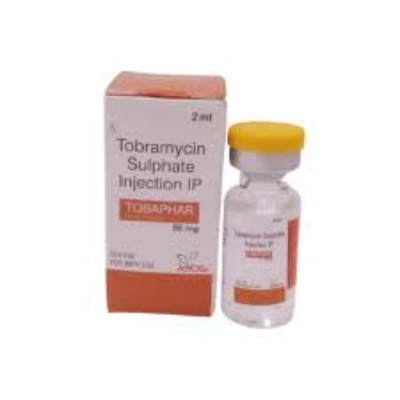


3-6 mg/kg/day IV/IM divided q8hr OR
4-7 mg/kg/dose IV/IM qDay
Clcr >60 mL/min: q8hr
Clcr 40-60 mL/min: q12hr
Clcr 20-40 mL/min: q24hr
Clcr 10-20 mL/min: q48hr
Clcr <10 mL/min: q72hr
Following dialysis in ESRD
Peak and trough concentrations, renal and auditory function
Life-threatening infection: 8-10 mcg/mL
Serious infection: 6-8 mcg/mL
UTIs: 4-6 mcg/mL
Synergy for infections caused by gram-positive organisms: 3-5 mcg/mL
May have increase activity against resistant Gram negatives
Citrobacter spp., E. coli, P. aeruginosa, Proteus spp. (indole-positive and negative), Providencia spp. (including Klebsiella-Enterobacter-Serratia), S. aureus (coagulase-positive and negative)
Ototoxicity
Nephrotoxicity
Neurotoxicity (neuromuscular blockade)
Hypotension
Drug fever
Drowsiness
Headache
Paresthesia
Tremor
Rash
Nausea
Vomiting
Anemia
Eosinophilia
Arthralgia
Weakness
Eyelid edema
Itching eyes
Keratitis
Lacrimation
Dyspnea
Documented hypersensitivity to any aminoglycoside or history of hypersensitivity or serious toxic reactions to aminoglycosides
Serious allergic sometimes fatal reactions including anaphylaxis and dermatologic reactions including exfoliative dermatitis, toxic epidermal necrolysis, erythema multiforme, and Stevens-Johnson Syndrome reported rarely; discontinue therapy If allergic reaction occurs, drug should be discontinued and appropriate therapy instituted
Serum and urine specimens for examination should be collected during therapy; serum calcium, magnesium, and sodium should be monitored
Cross-allergenicity among aminoglycosides has been demonstrated
In patients with extensive burns or cystic fibrosis, altered pharmacokinetics may result in reduced serum concentrations of aminoglycosides; in such patients treated with tobramycin, measurement of serum concentration is especially important as a basis for determination of appropriate dosage
Elderly patients may have reduced renal function that may not be evident in results of routine screening tests, such as BUN or serum creatinine; a creatinine clearance determination may be more useful; monitoring of renal function during treatment with aminoglycosides is particularly important in such patients
An increased incidence of nephrotoxicity reported following concomitant administration of aminoglycoside antibiotics and cephalosporins
Aminoglycosides should be used with caution in patients with muscular disorders, such as myasthenia gravis or parkinsonism, since these drugs may aggravate muscle weakness because of potential curare-like effect on neuromuscular function
Aminoglycosides may be absorbed in significant quantities from body surfaces after local irrigation or application and may cause neurotoxicity and nephrotoxicity
Aminoglycosides have not been approved for intraocular and/or subconjunctival use; physicians are advised that macular necrosis has been reported following administration of aminoglycosides, including tobramycin, by these routes
The inactivation of tobramycin and other aminoglycosides by ß-lactam-type antibiotics (penicillins or cephalosporins) has been demonstrated in vitro and in
patients with severe renal impairment; such inactivation has not been found in patients with normal renal function who have been given the drugs by separate routes of administration
Therapy with tobramycin may result in overgrowth of nonsusceptible organisms; if overgrowth of nonsusceptible organisms occurs, appropriate therapy should be initiated
Therapy, can cause fetal harm when administered to a pregnant woman; published literature reports that use of streptomycin, an aminoglycoside, can cause total, irreversible, bilateral congenital deafness when administered to a pregnant woman
Limited published data with tobramycin for injection in lactating women indicate that tobramycin is present in human milk; there are no data on effects of drug on milk production; drug may cause alteration in the intestinal flora of breastfeeding infant; advise a woman to monitor breastfed infant for loose or bloody stools and candidiasis (thrush, diaper rash).
Developmental and health benefits of breastfeeding should be considered along with mother's clinical need for therapy and any potential adverse effects on breastfed infant from drug or from underlying maternal condition
A: Generally acceptable. Controlled studies in pregnant women show no evidence of fetal risk.
B: May be acceptable. Either animal studies show no risk but human studies not available or animal studies showed minor risks and human studies done and showed no risk.C: Use with caution if benefits outweigh risks. Animal studies show risk and human studies not available or neither animal nor human studies done.
D: Use in LIFE-THREATENING emergencies when no safer drug available. Positive evidence of human fetal risk.
X: Do not use in pregnancy. Risks involved outweigh potential benefits. Safer alternatives exist.